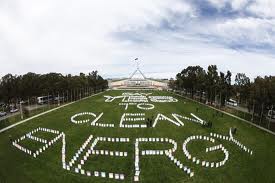
The Renewable Energy Target has been criticised as a subsidy to renewable energy investors that distorts the electricity market and gives clean energy an unfair advantage.
How true are these claims?
Would the electricity market be fair without the RET?
There are many historic and current subsidies in the energy sector. These range from government-built power stations to tax breaks that lower the cost of coal mining. The International Monetary Fund calculated that post-tax energy subsidies in Australia to oil, coal and gas amounted to over $23 billion in 2011 alone.1
The biggest subsidy is not fully pricing the costs of climate change. This transfers the costs of carbon pollution from the company balance sheet to the public and future generations. The cost of carbon pollution emitted in 2013 is very conservatively estimated at $40 per tonne.
Factoring in the risk of greater climate change increases this to $116 per tonne.2 This suggests that, in the absence of direct or indirect carbon pricing, Australia’s fossil-fuelled power stations are currently subsidised to the tune of $7- 20 billion a year. Moreover, the costs of pollution increase every year, so this subsidy is set to grow.
Is the RET a subsidy to renewable generation?
The Renewable Energy Target is a subsidy. Building new wind and solar costs more than existing coal and gas generation. The RET enables solar and wind providers to sell renewable energy certificates to make up the difference between the electricity they sell and the costs of building new power stations. The cost of the certificates—the subsidy to renewables—is paid by electricity consumers through their power bills.
This cost totals approximately $2 billion per year. To date this support has driven $18 billion investment in renewable energy, which has increased wind and solar power twenty- four-fold since 2001. This underpins around 21,000 jobs and has reduced carbon emissions by more than 20 million tonnes.4 5
Is the RET a “market-distorting” subsidy?
are explicitly priced and factored into decision-making the RET may not be necessary, but until this is the case such corrective subsidies will be required.
Ultimately your view on whether the RET is a distorting subsidy depends on whether you accept the warning of the world’s scientists that climate change is a major threat, and with 192 countries’ agreement to limit global temperature rise to less than 2°C.
This is a fact check document prepared by The Climate Institute as part of their reports on the renewable energy target, which can be found here: http://www.climateinstitute.org.au/news/renewable-energy-target.html/













